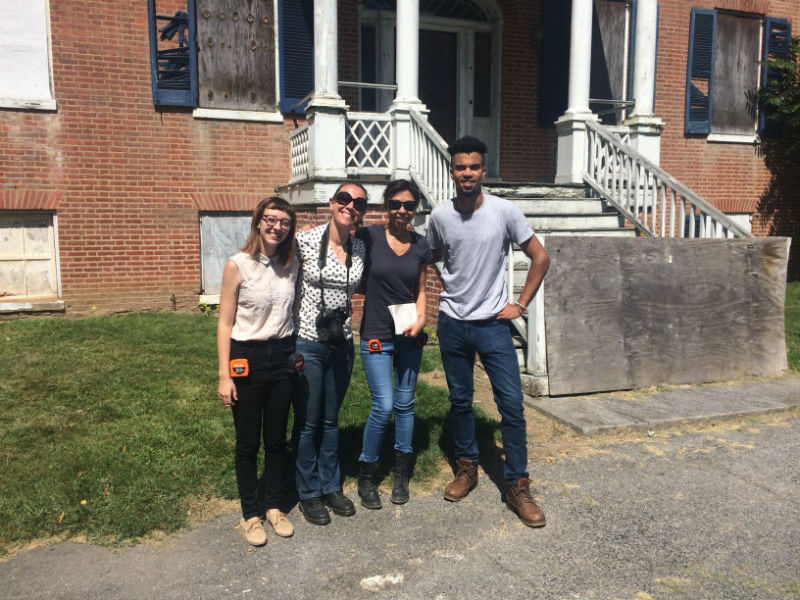Our Six-to-Fix program brings together the resources, people, and intention to make real impact at threatened historic places. Last year, we accepted the ca. 1810 Holly Hall house and grounds in Cecil County into the program because of the tremendous local political support for making something happen at the long-abandoned building. And we are making progress:
The Waxter Memorial Internship program is supporting the placement of Michelle Eshelman, a recent graduate with a Bachelor of Design in Architecture and minor in Studio Art from the University of Florida, with Preservation Maryland to work closely with visioning and illustrating the future of some of Maryland’s most threatened historic places. Learn more about Michelle and the intern program here: presmd.org/waxter.
FROM MICHELLE ESHELMAN, ARCHITECTURAL INTERN:
With Preservation Maryland’s Preservation Services Director, Margaret De Arcangelis and architect My Ly, who is consulting on the Holly Hall project as an expert in not only architecture but community visioning, our team traveled to Cecil County on a sunny day in September 2016. To tour the interior of the building, we were allowed access and led by John Peter, of the Cordish Company, owner of both Holly Hall and the adjacent contemporary strip-mall style development.
ARCHITECTURAL DOCUMENTATION
We began on the first floor, documenting and photographing the interior of the house. This Federal style house features a curved main stair, three large main rooms, a back-wing addition on the first and basement levels, and a right-wing addition on the first, second, and basement levels. Peters pointed out some fire damage within the central part of the house on the first floor including areas where original plaster was stripped off the walls to prevent the fire from spreading.

Throughout the right-wing addition to the house, the rooms were smaller and were used as contemporary offices at a more recent time. The second floor showed signs of water damage from a leaky roof, which had recently been repaired. The top floor was smaller in plan, and has small gable windows and angular ceiling lines, with more rooms arranged as offices. From here, we went down the main stairs and into the basement, which contained mostly electrical equipment and storage for the house.
THE WORK CONTINUES
To document the exterior, we began with the front elevation of the house. We took precise measurements with which to create measured drawings and a 3D digital model of the house. We measured each wall section, window opening, door frame, height, width, and depth of the exterior of the house. With these measurements, architect My Ly can more accurately portray plans for the house, and create images of what the property will look like when the project is completed.



